The Kraken: A Sea Monster of Myth and Legend
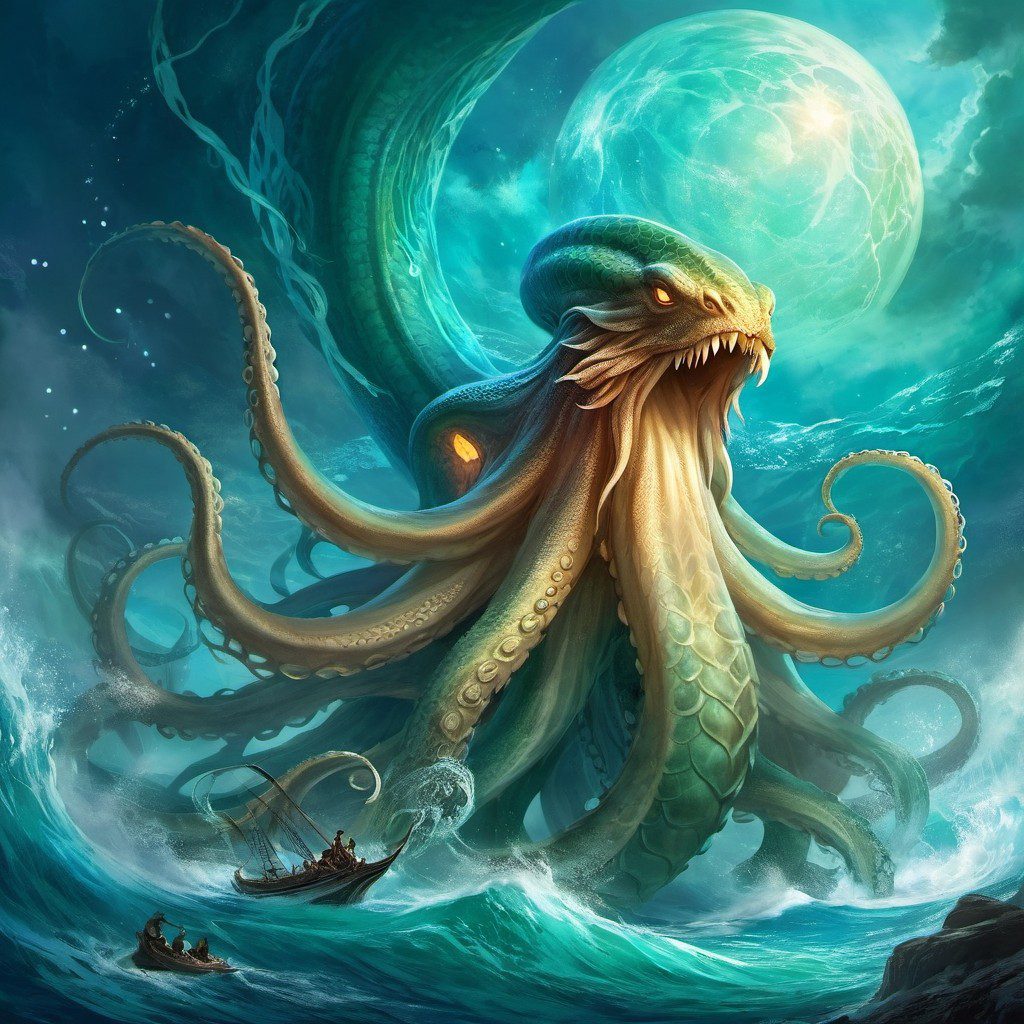
Few creatures in mythology inspire as much awe and terror as the Kraken. Emerging from the depths of the ocean, this colossal sea monster is said to be capable of dragging entire ships beneath the waves and terrorizing sailors on the high seas. The Kraken, often described as a gigantic, tentacled creature, has long been a symbol of the untamed power of the ocean, embodying both the fear of the unknown and the natural dangers of the deep.
In this blog, we will dive into the history and mythology of the Kraken, explore how it became one of the most famous sea monsters in Western lore, and examine its various depictions in literature, art, and modern pop culture. From the icy waters of Scandinavia to the pages of classic novels and blockbuster films, the Kraken has cemented its place as one of the most enduring monsters in the world of myth.
The Origins of the Kraken: Scandinavian Legend
The Kraken’s mythological roots can be traced back to the Norse and Scandinavian traditions. In these early accounts, the Kraken was often described as a sea monster of unimaginable size, dwelling off the coasts of Norway and Greenland. While today it is often depicted as a massive squid or octopus, the earliest descriptions varied—sometimes suggesting it was more crab- or whale-like. The one common thread in all these stories was the Kraken’s size and its ability to destroy ships, drag sailors to their doom, and cause massive whirlpools as it descended back into the ocean.
Early Scandinavian Accounts
The first known written account of the Kraken comes from the work of King Sverre of Norway in the 12th century. In this early description, the Kraken is mentioned as a gigantic sea creature capable of pulling ships down into the ocean. However, it was Erik Pontoppidan, a Norwegian bishop and naturalist, who popularized the Kraken in the 18th century. Pontoppidan’s book, The Natural History of Norway (1752), described the Kraken as a creature that lurked in the depths of the Norwegian Sea, feeding on massive schools of fish. Sailors and fishermen of the time feared the Kraken, believing that its presence was heralded by sudden boiling water, whirlpools, and the appearance of massive schools of fish that had fled to the surface in terror.
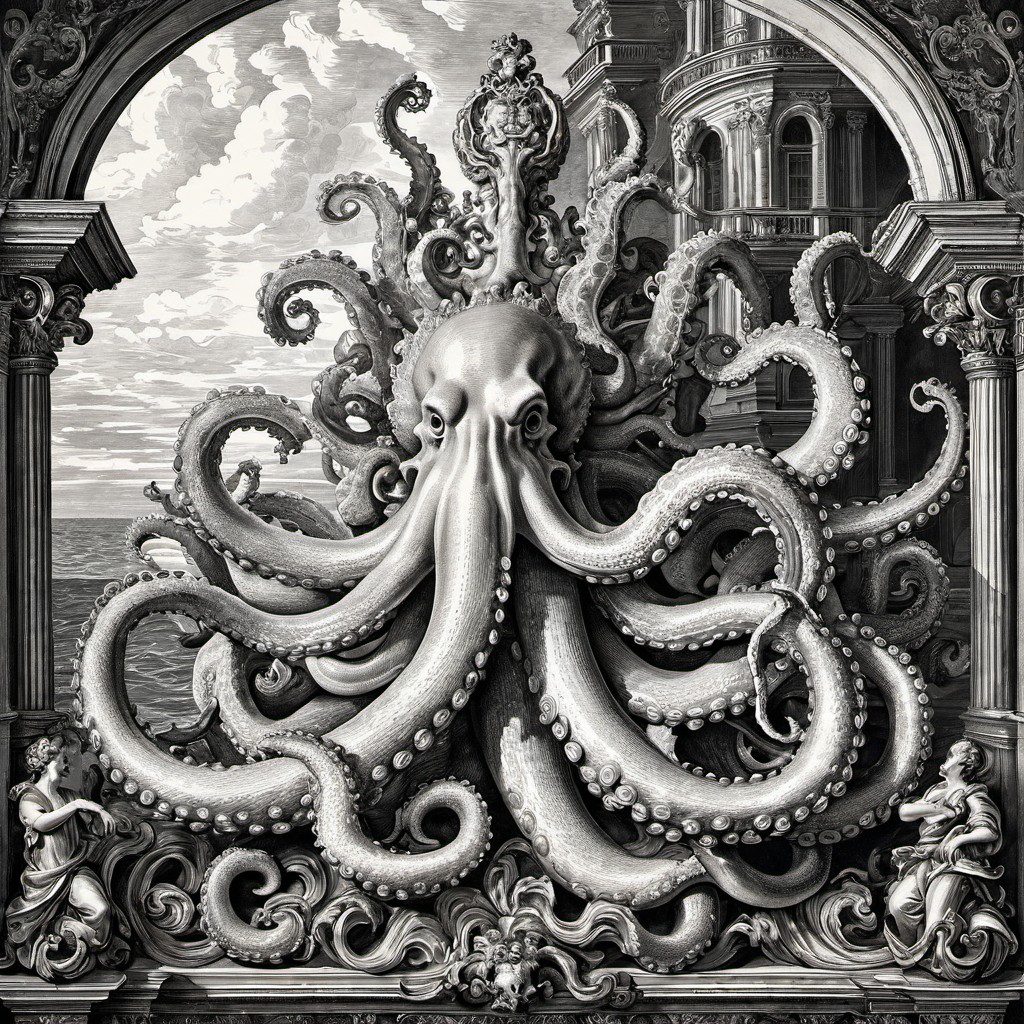
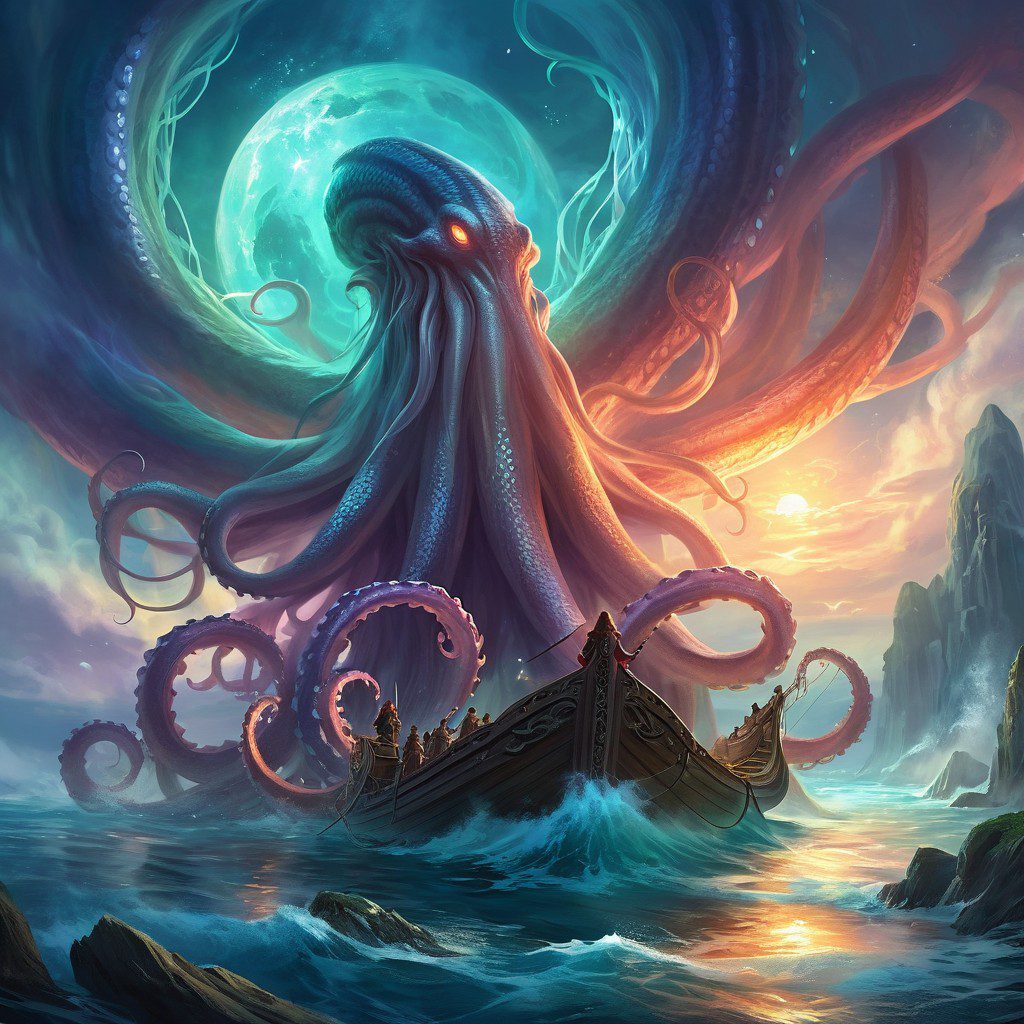
Pontoppidan’s description painted a vivid picture of the creature:
- “It is said to be so large that its body can be mistaken for an island… If sailors are unlucky enough to encounter it, they must quickly row away or be caught in the whirlpool it creates as it sinks.”
The Kraken’s portrayal as a monster that could create whirlpools aligns with the Norse myths of Jörmungandr, the Midgard Serpent, a sea creature so large that it encircled the world. These myths are part of a larger tradition in Scandinavian folklore that emphasizes the dangerous and unpredictable nature of the ocean.
The Kraken in Folklore: Fear of the Sea
In Scandinavian folklore, the Kraken symbolized the sheer power and mystery of the sea—a force beyond human control. These stories were passed down from generation to generation by sailors who spent their lives on treacherous waters, and the Kraken came to embody their deepest fears of the unknown lurking below the surface.
For the fishermen and sailors of Northern Europe, the ocean was both a source of sustenance and a deadly force of nature. Sudden storms, dangerous sea creatures, and mysterious disappearances were part of life. The Kraken’s legend grew in this environment, serving as an explanation for the seemingly supernatural disasters that befell ships at sea.
Over time, these tales took on more elaborate details. The Kraken was said to rise from the depths with little warning, its body so enormous that it could block out the sun or be mistaken for a floating island. In some stories, sailors described seeing gigantic tentacles emerging from the water and wrapping themselves around ships, dragging them down to the abyss.
The Kraken in Literature: Leviathans of the Deep
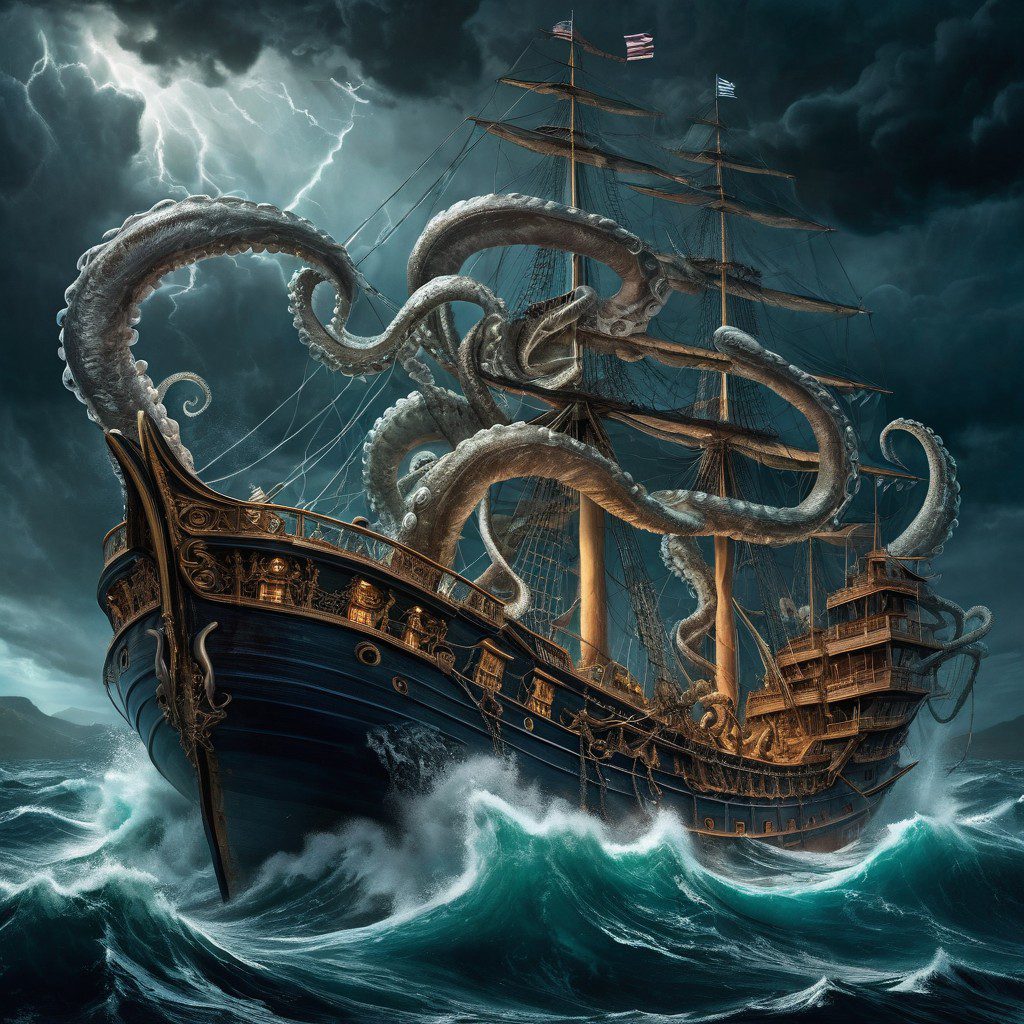
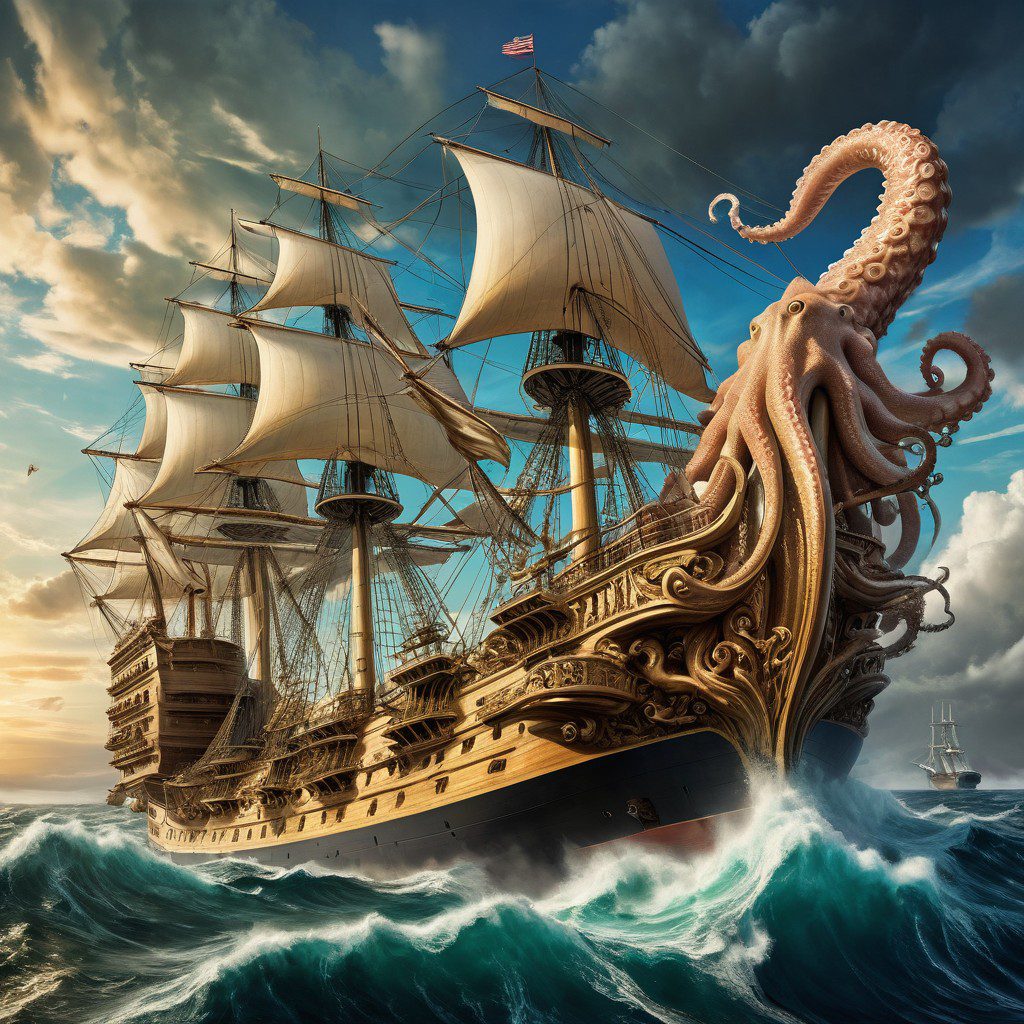
As Europe’s understanding of the world expanded with the Age of Exploration, the Kraken’s legend began to spread beyond the Scandinavian world. The creature was no longer just a regional myth; it became a fixture of maritime legend across Europe.
Early Literature
In the 18th and 19th centuries, European writers began to weave the Kraken into their literary works, often blending it with other mythological creatures like the Leviathan of the Bible. The Leviathan, described in the Old Testament as a sea monster of terrifying power, shared many traits with the Kraken, particularly its immense size and its association with destruction. The merging of these legends in literature further solidified the Kraken’s place as a symbol of the ocean’s fearsome might.
One of the earliest examples of the Kraken in literature is Alfred, Lord Tennyson’s poem “The Kraken” (1830). In this haunting work, Tennyson described the Kraken as a massive, slumbering creature resting beneath the ocean’s surface, only to awaken at the end of the world:
- “Below the thunders of the upper deep;
Far, far beneath in the abysmal sea,
His ancient, dreamless, uninvaded sleep
The Kraken sleepeth.”
This poem emphasizes the Kraken’s otherworldly nature, portraying it as a force that exists outside the realm of human control, waiting beneath the ocean for an inevitable and cataclysmic return.
The Kraken in “Moby-Dick”
The Kraken’s legend also left its mark on Herman Melville’s “Moby-Dick” (1851), a novel that explores themes of obsession, the power of nature, and the hunt for an elusive and deadly sea creature. While Moby Dick, the white whale, is not a Kraken, the novel’s descriptions of the sea and its mysterious, monstrous inhabitants are clearly influenced by the Kraken myth. Melville frequently references sea monsters and the vast unknowns of the deep, echoing the terror and awe that the Kraken inspired in sailors for centuries.
The Kraken in Modern Popular Culture
In the 20th and 21st centuries, the Kraken has become a staple of modern popular culture. Its status as a symbol of maritime terror has been reimagined and reinterpreted in numerous films, video games, and works of fiction.
“Clash of the Titans”
Perhaps one of the most famous modern portrayals of the Kraken comes from the 1981 film “Clash of the Titans”, which was later remade in 2010. In this version of the story, the Kraken is portrayed as an enormous, humanoid sea monster that is unleashed by the gods as a weapon of destruction. The phrase “Release the Kraken!” became a popular catchphrase after the movie, cementing the Kraken’s image as an unstoppable, godlike force.
Though the Kraken in “Clash of the Titans” is more closely linked to Greek mythology, it retains many of the traits of the original Scandinavian legend, particularly its destructive power and association with the sea.
Video Games and Role-Playing Games
The Kraken has also found a place in the world of video games and tabletop role-playing games, particularly in games like Dungeons & Dragons. In Dungeons & Dragons, the Kraken is portrayed as a massive, tentacled beast capable of sinking ships and laying waste to coastal cities. Its depiction in these games often emphasizes its intelligence and its role as a ruler of the deep oceans, further expanding on its mythological origins.
The Kraken also appears in video games like Assassin’s Creed IV: Black Flag and Sea of Thieves, where it serves as a formidable adversary for players sailing the high seas. These modern interpretations blend the original myth of the Kraken with new elements, transforming it into a symbol of both adventure and danger in the ocean’s depths.
The Kraken in Literature and Film
The Kraken continues to appear in modern literature and films, often as a symbol of the unknown dangers lurking beneath the surface. In novels like Jules Verne’s “Twenty Thousand Leagues Under the Sea” (1870), the Kraken appears as a massive sea creature that threatens the protagonists’ underwater voyage, though it is portrayed as a giant squid rather than the island-sized monster of earlier legends.
The Kraken also features prominently in the Pirates of the Caribbean film series, where it serves as a pet of the villain Davy Jones. In this depiction, the Kraken is an enormous, tentacled creature capable of sinking ships and devouring entire crews. Its role as an agent of destruction controlled by Jones reinforces its status as a terrifying force of the sea.
Strengths and Weaknesses of the Kraken
Throughout its mythology and modern interpretations, the Kraken is characterized by its immense power and size. However, like all legendary creatures, it has its strengths and weaknesses.
Strengths:
- Colossal Size and Strength: The Kraken is consistently described as being of immense size, capable of destroying ships with its tentacles or dragging them beneath the water. Its sheer physical power is one of its most defining characteristics.
- Ability to Create Whirlpools: In some myths, the Kraken can create deadly whirlpools as it sinks beneath the ocean, dragging ships down with it. This ability emphasizes the Kraken’s connection to the uncontrollable forces of the sea.
- Regeneration: In certain modern interpretations, the Kraken possesses the ability to regenerate or heal quickly, making it even more difficult to defeat in battle.
Weaknesses:
- Isolation: The Kraken is often portrayed as a solitary creature, isolated in the deepest parts of the ocean. This isolation may limit its interaction with other creatures or prevent it from being as versatile as other sea monsters.
- Lack of Speed: Despite its size, the Kraken is sometimes described as slow-moving, which could make it vulnerable to fast-moving ships or attackers. However, this weakness is rarely explored in myths.
- Tied to the Sea: The Kraken’s power is deeply connected to its oceanic environment. It is rarely depicted as being able to leave the water, meaning its range is limited to the seas and oceans.
The Symbolism of the Kraken: Power, Nature, and Fear
The Kraken’s enduring appeal as a mythical creature lies in its symbolic power. It embodies the vast, unknowable nature of the sea and the dangers that lurk beneath the surface. The Kraken represents the power of nature—something that humans cannot control or conquer, no matter how advanced their ships or how clever their strategies.
Throughout history, the Kraken has also symbolized fear of the unknown. For sailors venturing into uncharted waters, the Kraken was a reminder that the sea held mysteries and dangers far beyond human understanding. This fear of the unknown is a theme that continues to resonate in modern storytelling, where the Kraken often serves as a metaphor for the unpredictable and uncontrollable forces in our lives.
Conclusion: The Lasting Legacy of the Kraken
The Kraken, a creature born from the myths of the Norse and Scandinavian sailors, has transcended its origins to become one of the most iconic sea monsters in the world. From its early descriptions as a tentacled terror of the deep to its modern portrayals in film, literature, and video games, the Kraken continues to captivate audiences with its power, mystery, and fearsome presence.
As long as humanity continues to explore the unknown and confront the untamed forces of nature, the Kraken’s legend will endure—a reminder of the awe-inspiring and terrifying depths that still lie beyond our reach.
